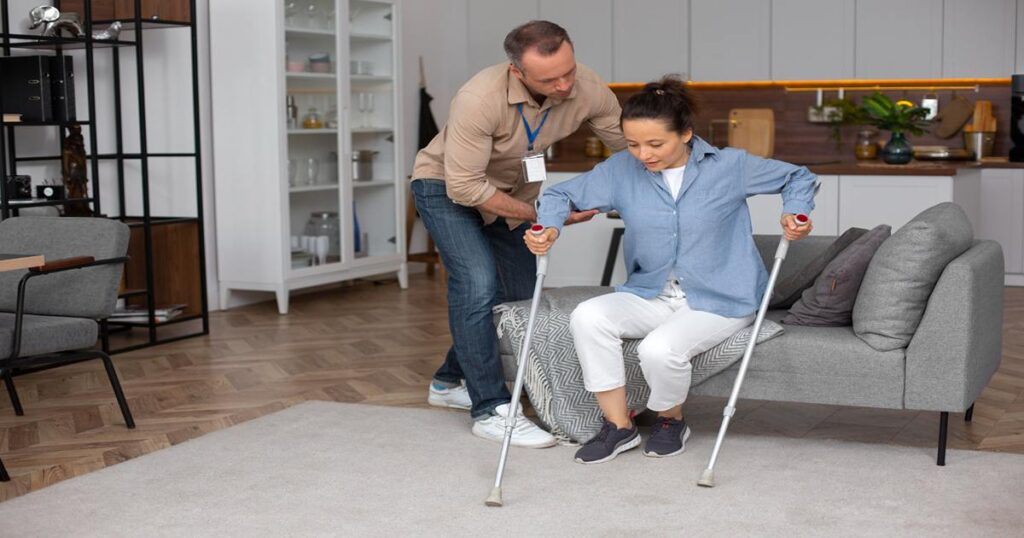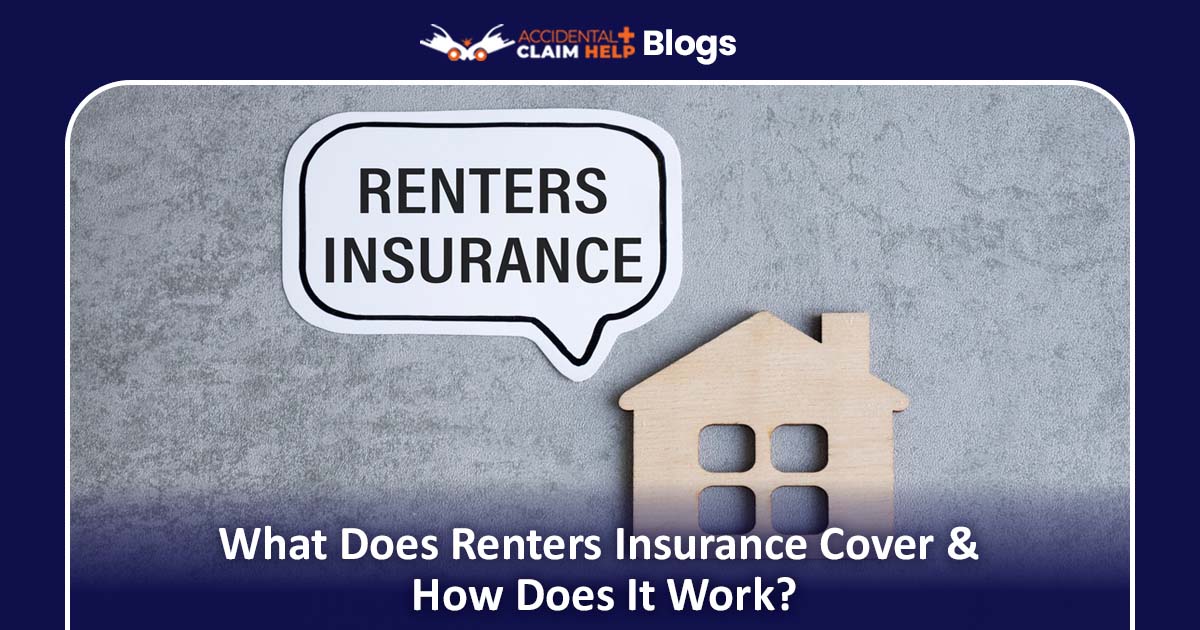What Does Renters Insurance Cover & How Does It Work?
Moving into a rental home? Tenant insurance (commonly called renters insurance in the U.S.) protects your belongings and liability, not the landlord’s property. Landlords insure the building structure, but your furniture, electronics, clothes and personal items belong to you. A renters policy typically covers theft, fire, water leaks and other losses to your stuff, plus liability if someone is hurt in your home. Premiums are usually very affordable (often just $15–$30 per month on average).
In short, renters insurance covers four main things: personal property (your belongings), personal liability, medical payments to injured guests, and additional living expenses if your rental becomes temporarily uninhabitable. This means your bike, couch, TV, clothes, etc., are covered against covered perils; you’re protected if you accidentally hurt someone or damage their property; small medical bills for injured visitors are paid; and you get help with hotel or meals if you must move out after a loss.
Personal Property Protection
This part of renters insurance pays to repair or replace your personal belongings if they’re damaged, destroyed, or stolen by a covered loss. Covered items typically include clothes, furniture, electronics (TV, laptops, phones), appliances you bring with you (microwave, washer/dryer), sports equipment, and other possessions. Many policies even cover your stuff when you’re away from home – for example, if someone steals your laptop from your parked car, you may still be covered.
The payout is up to your policy limits, minus any deductible. Note that most policies pay actual cash value (item’s depreciated value), unless you add replacement-cost coverage. With replacement cost coverage you’d get enough to buy a new item, rather than its depreciated value. It’s wise to keep a home inventory (list or photos of your items) to make claims easier.
Liability Coverage
Liability protection helps cover injuries or property damage you cause to others. If a visitor is hurt or someone else’s property is damaged on your watch, liability insurance can pay the costs. For example, if a guest trips on your loose rug and breaks an arm, your liability coverage can pay medical bills and legal fees up to your policy limits. Similarly, if you accidentally start a kitchen fire that spreads to the building, liability pays damages to affected parties.
This includes damage to property rented to you (like apartment walls or floors) from fire, smoke or burst pipes. Liability even covers small pet incidents – up to about $500 beyond your security deposit, if your dog nips a visitor. This coverage also provides a legal defense if someone sues you. In short, liability insurance protects your savings if you’re found legally responsible for someone else’s injury or loss.
Medical Payments to Others
This no-fault coverage pays minor medical bills for guests hurt on your property, whether or not you’re at fault. For example, if a friend slips in your apartment and needs an X-ray, medical payments coverage can pay that cost directly. It’s sometimes called “guest medical” coverage.
It has relatively low limits (often a few thousand dollars per person), but it can spare you a lawsuit over small accidents. Medical payments “pay for minor injuries to guests regardless of fault.” You choose the limit (common amounts range from $1,000 to $5,000); higher limits may cost a few extra dollars.
Additional Living Expenses (Loss of Use)
If a covered loss (like a fire or flood from a burst pipe) makes your rental unsafe to live in, this coverage helps pay your extra living costs. That means hotel bills, restaurant meals, laundry or storage fees – anything above your normal living expenses while you’re displaced.
For instance, if a kitchen fire forces you out of your apartment, your policy may reimburse a short-term rental, moving your belongings into storage, and even increased food bills until you can return home. These costs are paid up to the limits and time frame in your policy (often up to 12–24 months).
Covered Perils (What’s Included)
Renters policies are usually named-perils policies, meaning they cover losses caused by specific events listed in the policy. Typical perils covered include things like:
- Fire, lightning or explosion (e.g. a stove fire)
- Smoke damage (from a sudden fire elsewhere, not gradual smell)
- Theft and vandalism (burglary, break-ins, stolen items)
- Windstorms or hail (damage from a wind-driven fire or storm)
- Water damage from plumbing (burst pipes, furnace leaks)
- Falling objects or weight of ice/snow (if in peril list)
- Other named events (sometimes lightning, vehicles, riots, etc.)
For example, the most common renters policy (Broad Form) specifically includes fire, lightning, explosion, smoke, vandalism, theft and water damage from utilities as covered losses. In short, most sudden accidents and common disasters inside the home are covered if they are listed in the policy.
Additionally, many policies cover off-premises losses – like if your bike is stolen at the gym or your laptop is stolen from your car – as long as they’re stolen or damaged by a covered peril.
Exclusions (What’s Not Covered)
No policy covers everything. Notable exclusions in a standard renters policy include:
- Structural damage to the building: Your policy does not cover damage to walls, roof, foundation or the building itself (that’s the landlord’s insurance).
- Natural disasters: Floods (e.g. from overflowing rivers), earthquakes, sinkholes, mudslides and other earth movements are typically excluded. (If you rent in a flood zone, you’d need separate flood insurance.)
- Sewer or drain backups: Damage from sewer backups or sump pump failures usually requires an endorsement or separate coverage.
- Mold, rot, insects or vermin: Damage from gradual causes like mold, termites, rodents, or dry rot is not covered.
- Wear and tear/neglect: Normal deterioration of items (age, rust, mechanical breakdown) isn’t covered, nor is damage you cause through neglect.
- Intentional or criminal acts: Any losses from illegal activity or intentional damage by you aren’t covered.
- Business property: High-value business equipment or inventory (beyond small home offices) is limited.
- Certain valuables limits: Expensive items (jewelry, art, collectibles) often have sub-limits (e.g. jewelry might be covered only up to $1,500 unless you buy extra coverage).
Always read your policy or ask your agent about exclusions so you’re clear what is not paid.
Example Claim Scenarios
Here are a few real-world examples showing how renters insurance works in practice:
- Theft of personal items: You come home to find your living room ransacked and a laptop and TV missing. Your renters insurance (with personal property coverage) can reimburse you for the replacement cost of those items up to your policy limits. (Be sure to report the theft to police and your insurer.)
- Kitchen fire and relocation: While cooking, you accidentally start a small fire. It damages your refrigerator and cabinets and sends smoke through the apartment. Your personal property coverage would pay to replace the burned items. Because the apartment is unlivable during repairs, your additional living expense coverage would pay for a hotel and extra meals. If the fire also damaged the building (walls or ceiling), your liability coverage could cover the landlord’s repair costs.
- Guest injury: A friend slips on your slick bathroom floor and breaks a leg. Your medical payments coverage pays the doctor and hospital bills up to its small limit (say, $2,000) regardless of fault. If the friend decides to sue you for larger damages, your liability coverage would step in to cover legal fees and any settlement up to your liability limit.
- Accidental water leak: You forget to shut off a tap, and your kitchen floor floods, damaging rugs and drenching the downstairs ceiling. Your policy’s personal property portion pays for the ruined rug replacement. Under liability coverage, you also get help paying to repair the downstairs ceiling (this falls under “damage to property rented to you” in many policies).
Each of these scenarios would prompt a claim to your insurer, who would verify that the cause is covered and then reimburse you (minus your deductible). In short, renters insurance handles accidents by applying the relevant coverage: personal property for your damaged items, liability for others’ injuries or damaged property, and living expenses if you can’t stay in your home.

When Accidents Happen
Accidents can and do happen in rental homes. If you accidentally damage the rented apartment or injure a guest, renters insurance steps in. For example, suppose you trip and spill boiling water, causing burns or damage to a visitor. Your liability coverage may pay that person’s medical expenses or legal settlement if they sue. Even if you aren’t at fault, your policy’s medical payments can quickly handle small injuries (like broken bones) so you’re not stuck with big bills.
Or imagine your overloaded outlet starts a short and sparks a fire. Your renters insurance would cover the resulting damage. The personal property portion replaces your burnt TV and stereo, your liability covers damage to the structure or neighbors, and you get help with living elsewhere while repairs are made. In essence, renters insurance provides a safety net for all the common mistakes and surprises that can happen in a home.
Bottom Line
Tenant (renters) insurance is designed to protect you – your stuff and your finances – when unexpected losses occur in your rental home. It covers most major perils to your belongings, plus liability and living expenses. It’s relatively inexpensive for the peace of mind it gives. Even if you’re young or healthy, consider how costly a single incident (like a theft or a large accident claim) could be. For most renters, having an active insurance policy is well worth the small premium.







